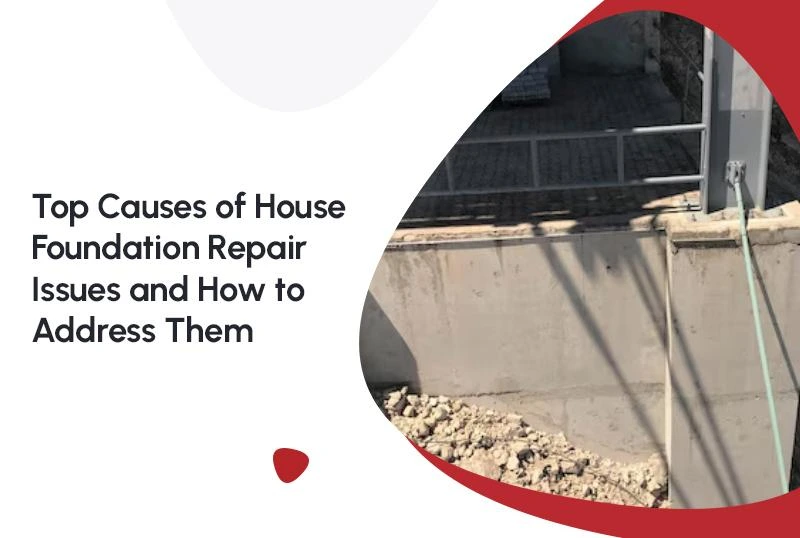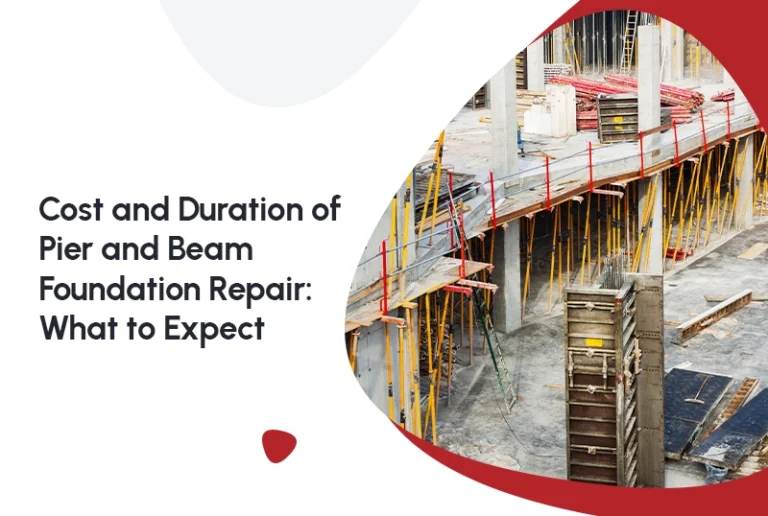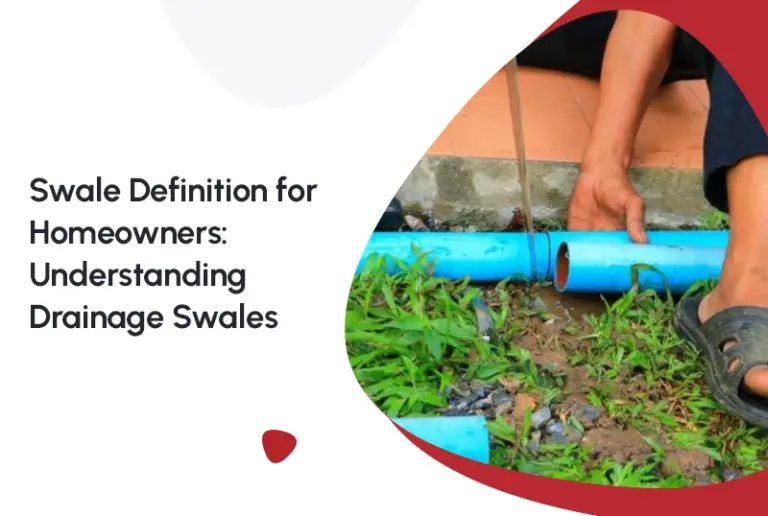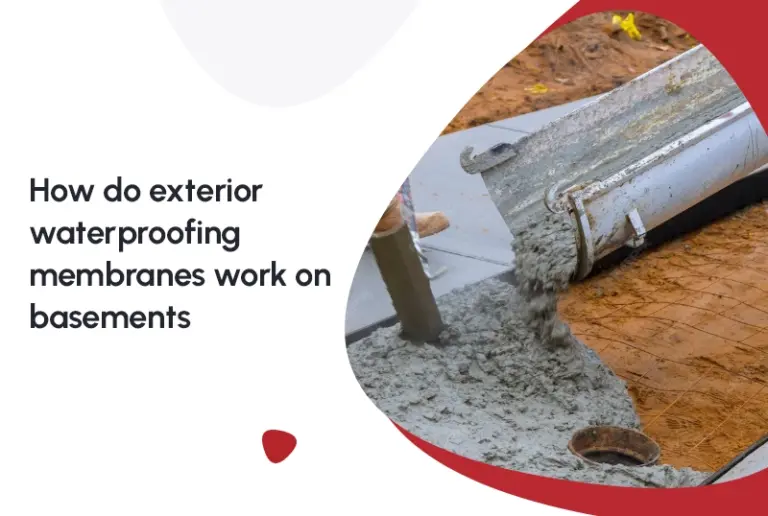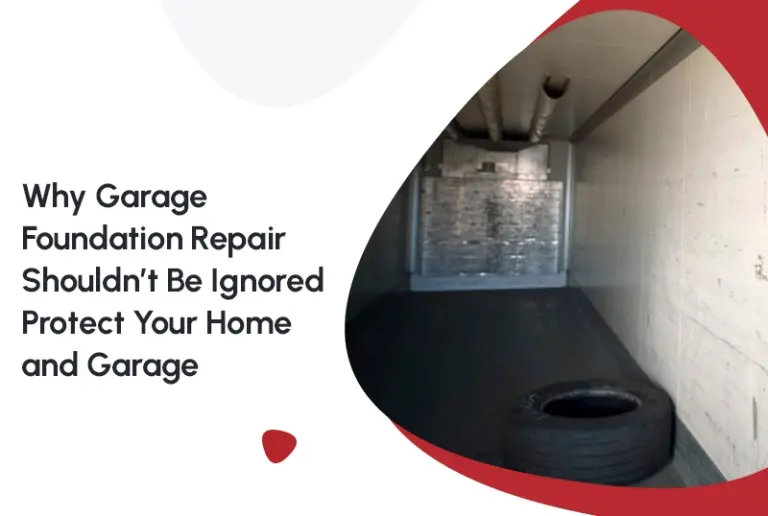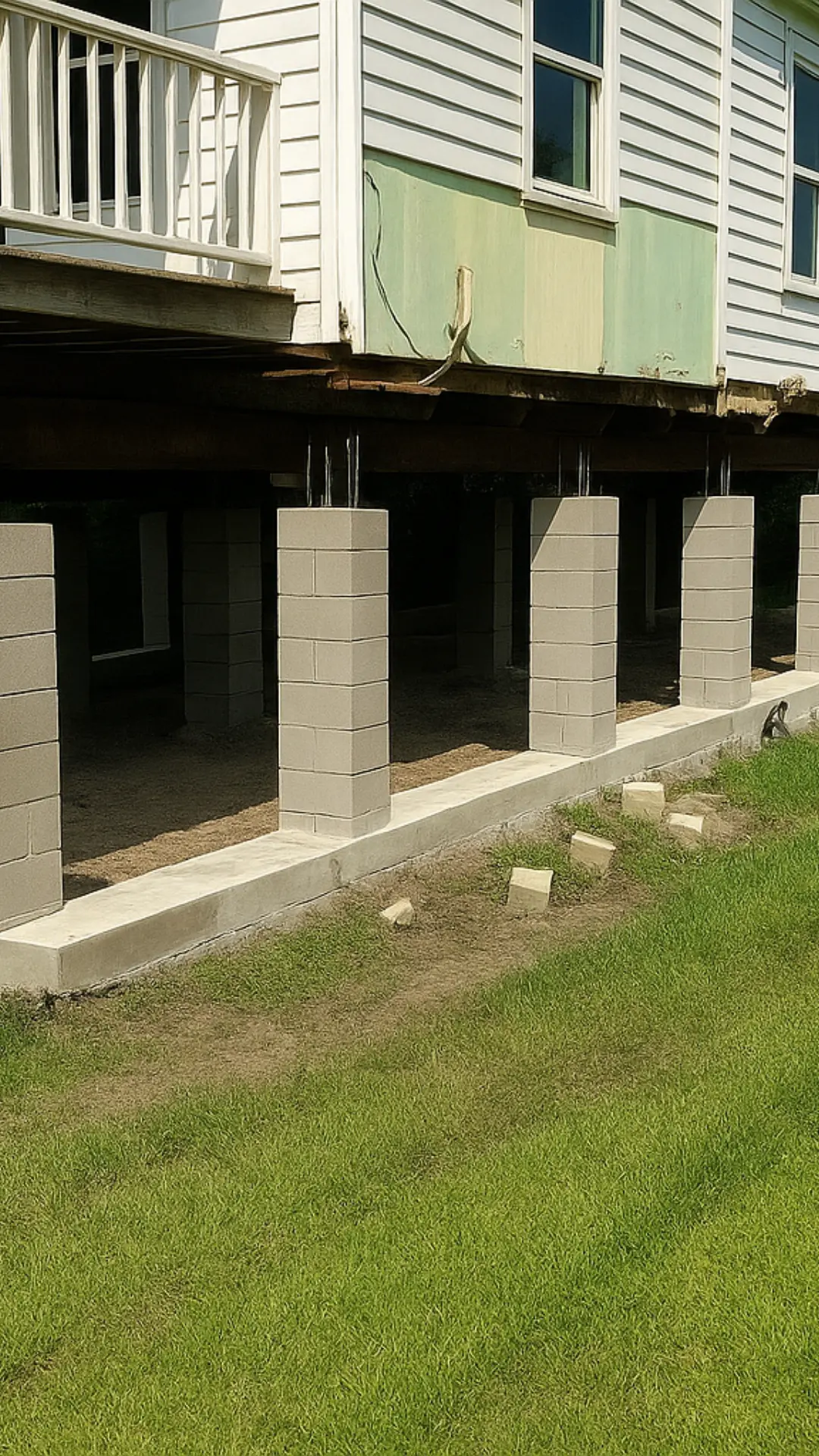Your home’s foundation is arguably the most important part of its structure. Without a strong and stable foundation, your home becomes vulnerable to damage that can affect everything from the walls to the roof. Over time, various issues can arise that compromise the integrity of your foundation, leading to costly repairs. Foundation problems should never be ignored, as they can escalate quickly and cause long-term damage to the structure of your home. In this guide, we’ll cover the top causes of house foundation repair issues, how to identify them, and the best solutions to ensure your foundation stays strong and stable.
What Is House Foundation Repair?
House foundation repair refers to the process of fixing damage or structural issues in your home’s foundation. These repairs are critical to maintaining the stability of your home. Foundation problems can arise due to various factors, such as soil conditions, moisture levels, and the age of the structure. When foundation issues are left unaddressed, they can cause a range of problems, including uneven floors, sticking doors and windows, and cracks in the walls. The goal of foundation repair is to restore the foundation’s integrity and prevent further damage from occurring.
Top Causes of House Foundation Repair Issues
House foundation repair issues can stem from a variety of causes. Some of the most common ones include:
1. Soil Movement and Settling
One of the most frequent causes of foundation issues is soil movement. The type and condition of the soil beneath your foundation play a critical role in its stability. There are several factors that can cause soil to shift, settle, or erode, which in turn leads to foundation problems.
Common causes of soil movement:
- Expansive Soils: Soils that swell and shrink depending on moisture levels are known as expansive soils. When these soils become wet, they expand, and when they dry out, they shrink. This constant expansion and contraction can cause your foundation to shift and crack.
- Erosion: If the soil around your foundation is eroded by rain, wind, or poor drainage, it can lead to uneven settling and foundation problems.
- Poor Compaction: If the soil beneath the foundation was not properly compacted during construction, it may settle unevenly over time, leading to foundation instability.
How to address soil movement:
To prevent soil movement from damaging your foundation, it’s essential to maintain proper drainage around your home and address any issues with expansive soils early. Solutions for house foundation repair may include:
- Soil stabilization: Stabilizing the soil with methods like deep compaction or injecting chemical stabilizers can prevent further shifting and settling.
- Foundation piers: Installing foundation piers or helical piers is a common method to stabilize foundations that have shifted due to poor soil compaction or soil movement. These piers are driven deep into the ground to reach stable soil, providing support to the foundation.
2. Water Damage and Moisture Problems
Excess moisture is one of the leading causes of house foundation repair issues. Water can infiltrate the foundation in several ways, including through cracks in the foundation wall or improper drainage around the home. When water accumulates around the foundation, it can cause the soil to expand, leading to settling or shifting of the foundation.
Common water-related foundation issues include:
- Hydrostatic Pressure: When water accumulates around the foundation, it exerts pressure on the walls, causing them to crack or bow. This is particularly problematic in areas with high rainfall or poor drainage.
- Water Seepage: Water seeping through cracks or porous foundation walls can weaken the structure over time. The moisture can also promote mold growth, which can affect indoor air quality and the overall health of the home.
- Soil Erosion: Water can wash away soil beneath the foundation, creating voids that cause the foundation to sink or shift.
How to address water-related foundation issues:
To protect your foundation from water damage, it’s essential to manage moisture around your home. This can be done through:
- Proper Drainage: Ensure that gutters, downspouts, and French drains are properly installed and maintained to direct water away from the foundation.
- Waterproofing: Applying a waterproofing sealant to the exterior of the foundation can help prevent water infiltration. This is especially important in areas with high rainfall or fluctuating groundwater levels.
- Sump Pumps and Drainage Systems: Installing sump pumps and interior drainage systems can help control water buildup in crawl spaces or basements, preventing water damage to the foundation.
3. Foundation Cracks
Cracks in the foundation are one of the most visible and concerning signs of foundation damage. Cracks can appear due to a variety of reasons, including soil movement, water infiltration, and the natural settling of the foundation. Foundation cracks can vary in size, from hairline cracks to large, deep fissures that can threaten the structural integrity of your home.
Common causes of foundation cracks include:
- Settlement: As the foundation settles over time, small cracks may appear. These cracks are usually vertical and can often be repaired with simple patching.
- Pressure from Soil Movement: As soil shifts, it can cause the foundation to crack or bow. Horizontal cracks are particularly concerning, as they may indicate that the foundation is under significant pressure.
- Water Expansion: Water that infiltrates the foundation can freeze and expand in cold climates, causing cracks to widen over time.
How to address foundation cracks:
The treatment for foundation cracks depends on the severity of the damage. Solutions for house foundation repair may include:
- Crack Filling: Small cracks can be sealed using epoxy or polyurethane injections, which help prevent water infiltration and restore the foundation’s integrity.
- Foundation Piering: For more severe cracks caused by soil movement, foundation piers or helical piers can be installed to lift and stabilize the foundation.
4. Poor Foundation Construction
In some cases, foundation issues arise due to poor initial construction or design flaws. If the foundation was not built according to proper standards or with adequate materials, it may start to deteriorate or fail prematurely.
Common construction-related foundation problems include:
- Insufficient Reinforcement: If the foundation lacks proper reinforcement, it may be prone to cracking or settling over time.
- Improper Drainage: If the original design did not account for proper drainage around the foundation, it can lead to water accumulation and pressure on the walls.
How to address construction-related foundation issues:
If poor construction is identified as the cause of foundation problems, it’s crucial to consult with a professional foundation contractor to determine the best course of action. Solution for house foundation repair may involve:
- Foundation Replacement: In extreme cases, the entire foundation may need to be replaced.
- Reinforcement: For foundations that lack proper support, adding reinforcements like steel beams or carbon fiber straps can strengthen the structure and prevent further movement.
5. Tree Roots and Vegetation
Tree roots and vegetation can cause significant damage to your foundation if left unchecked. As trees and plants grow, their roots can penetrate the soil beneath your foundation, causing it to shift or crack. In some cases, large tree roots can even push against the foundation walls, leading to structural issues.
How to address tree root issues:
To prevent tree roots from damaging your foundation, it’s important to:
- Remove or Trim Trees: Remove any trees that are too close to your foundation, or regularly trim their roots to prevent them from causing damage.
- Root Barriers: Installing a root barrier around your foundation can prevent roots from encroaching on the structure. These barriers can be made of materials like plastic or metal to stop roots from growing toward the foundation.
6. Freeze-Thaw Cycles
In colder climates, freeze-thaw cycles can have a major impact on your foundation. When water enters cracks in the foundation and freezes during winter, it expands, exerting pressure on the walls. As the weather warms and the ice thaws, the pressure is released, causing the cracks to widen.
How to address freeze-thaw issues:
- Waterproofing and Sealing Cracks: Sealing cracks and applying a waterproofing membrane to the foundation can help prevent water from entering and freezing in the first place.
- Insulation: Installing insulation around the foundation can help prevent freezing and thawing, reducing the risk of damage.
Conclusion
House foundation repair is a critical part of maintaining the stability and longevity of your home. Whether caused by soil movement, water damage, poor construction, or external factors like tree roots and freeze-thaw cycles, foundation issues should never be ignored. By identifying the causes early and taking proactive measures, you can prevent further damage and protect your home from costly repairs in the future.
If you notice signs of foundation problems, such as cracks in the walls, uneven floors, or sticking doors and windows, it’s time to consult with a professional house foundation repair company. With the right foundation repair techniques, you can restore your home’s structural integrity and keep it safe and secure for years to come.
FAQs
1. Is it worth fixing the foundation of a house?
Yes, house foundation repair is almost always worth it. Foundation problems can lead to serious structural issues, such as sagging floors, cracking walls, or uneven doors and windows. The sooner foundation issues are addressed, the less expensive the repairs will be. Ignoring these problems can result in larger, costlier issues down the line, and can even reduce the value of your property.
2. What happens if you don’t fix the foundation of a house?
If you don’t do house foundation repair, the damage can worsen over time. Cracks can widen, walls can bow, and floors can become uneven, leading to extensive structural damage. This can result in water intrusion, mold growth, and more expensive repairs. Foundation issues can also impact plumbing, electrical systems, and the overall stability of the home, making it unsafe to live in.
3. What are the top signs a house has foundation problems?
Signs that your house has foundation problems include cracks in the walls, especially near doors and windows, uneven floors, sticking doors and windows, and visible gaps around the baseboards or window frames. Additionally, exterior cracks in the brick or concrete foundation, as well as moisture problems in the basement or crawl space, are also red flags.
4. How expensive is it to fix foundation issues?
The cost of fixing foundation issues depends on the severity and extent of the damage. Minor cracks may cost between $500 and $1,500 to repair, while more severe problems such as settling or sinking foundations can range from $3,000 to $15,000. The type of repair needed—whether it’s piering, slabjacking, or foundation leveling—can also influence the cost.
5. What is the most common foundation failure?
The most common foundation failure is settling or sinking, which occurs when the soil beneath the foundation shifts or compresses, causing the foundation to drop. Expansive soils, such as clay, expand when wet and shrink when dry, creating pressure on the foundation. Water infiltration and poor drainage also contribute to foundation movement and cracking.
6. Does homeowners insurance cover house foundation repairs?
In most cases, homeowners insurance does not cover foundation repairs unless the damage was caused by a covered peril, such as flooding, earthquakes, or sudden, accidental damage. Regular wear and tear, settling, or damage due to poor soil conditions are generally not covered. Some homeowners choose to purchase additional coverage or a separate rider for foundation issues.
7. How is a house foundation repaired?
House foundation repairs vary depending on the type and extent of damage. Common methods include piering, where steel or concrete piers are driven deep into the ground to stabilize the foundation; slabjacking, which involves injecting grout beneath the slab to raise it back to level; and wall anchors to stabilize bowed basement walls. Each method aims to restore the foundation’s stability and prevent further shifting.
8. What is the cheapest way for house foundation repair?
The cheapest way to repair a foundation is usually by addressing minor cracks early using epoxy or polyurethane injections. For slight settling, slabjacking or mudjacking is an affordable option. While these methods are budget-friendly, they may not be suitable for severe foundation issues. It’s important to consult with a professional to determine the most cost-effective approach for your situation.
9. What is the best time of year for foundation repairs?
The best time of year for foundation repairs is typically during spring or fall, when the weather is mild and moisture levels in the soil are more stable. Summer heat and winter freeze-thaw cycles can create unstable soil conditions, which can interfere with the foundation repair process. Scheduling repairs during moderate weather allows for more accurate assessments and effective solutions.
10. What is the most expensive part of building a house?
The most expensive part of building a house is often the foundation, especially if special considerations like soil testing, waterproofing, or reinforcement are needed. For multi-story homes or homes built on unstable soil, the foundation can account for 10–20% of the total construction cost. The type of foundation, such as a basement or crawl space, will also impact the cost.
